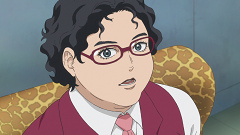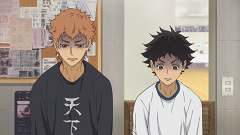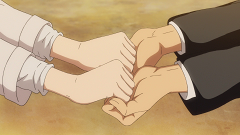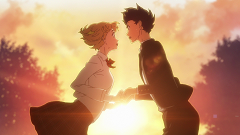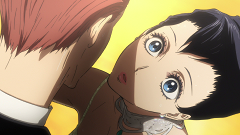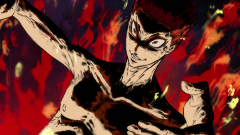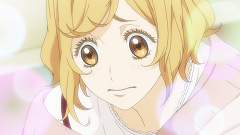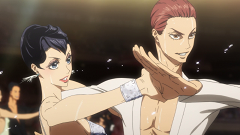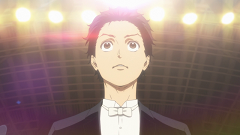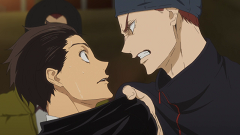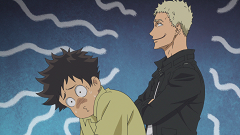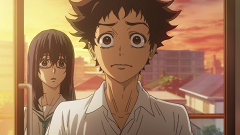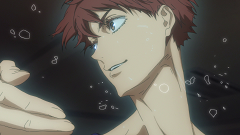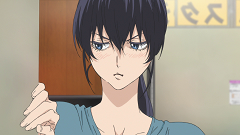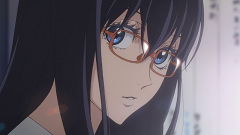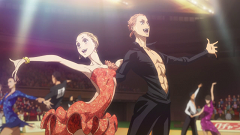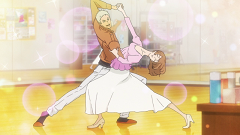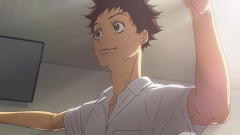Ballroom aired a double feature last week, so this review is either a few days late or a few days early, depending on how you look at it. Either way, there won’t be a new episode this coming Saturday, with the next one scheduled to appear on August 12th. Personally, I welcome the break as an opportunity to reset my expectations for the show, which seem to have been too high. This series isn’t a mold-breaker of any kind, but rather a traditional shounen anime with non-traditional subject material. “Partner” was likewise a straightforward episode, but it did manage to properly introduce two very different characters, and adjust the motivations driving several of our main players. Not a bad way to wrap things up before a two-week break, all things considered.
With Hyodo occupying the role of brooding genius, the show was missing a more hot-blooded rival character – that is, until now. Enter Gaju Akagi, whose brash personality and loud mouth are perfectly complimented by his ginger mullet. It’s a bit ironic that he insults Tatara’s bedhead just minutes after barreling into the episode, given his own disastrous hairdo. Maybe he lets it grow so long in the back because he’s ashamed of his giraffe neck? Jokes aside, though, Gaju’s dancing is nothing to laugh at, and he supports his claim to become Shizuku’s new partner with some fancy Latin footwork. The last of those three cuts looked rotoscoped to my eyes, but it was also super smooth and a little sexy, which is a tone that has eluded the series until now. I wouldn’t mind if I.G. fell back on this method from time to time in the future.
Gaju’s younger sister Mako can only watch from the sidelines as her partner tries to leave her behind, which is more than a little sad. She’s the meek, sensitive type, which is also a template that Ballroom hadn’t busted out until this week. Tatara is charmed by her shyness the same way he was by Shizuku’s strength, but is unable to sync with her during their first dance (if you could even call it that). Mako’s willingness to be led pays off later in the episode, though, when Tatara activates Prodigy Mode and instinctively guides her where she wants to go, providing some confidence in their future teamwork. Mako will have to exhibit much more improvement if she wants to reach her new goal, though: surpassing Shizuku and convincing Gaju to rejoin her as one of Japan’s best amateur Latin duos.
Also on board with this plan are Tatara and Sengoku, the latter of whom sets up the second meeting between the two shy kids. This might be the first time that Sengoku is actually cooperating with his new student, rather than manipulating or making fun of him, and it’s only made possible by their mutual dislike of Gaju. At the root of that dislike is the shared belief that Gaju is “stealing” Shizuku from Hyodo, but the reality is that Shizuku chose to switch partners of her own will. She claims not to care about Hyodo anymore, but regardless of whether that declaration holds any water, he’s banned from JDSF competitions for six months, so why not let the girl find a new lead? Even if her decision is meant to anger Sengoku, who she rightly calls out for being untrusting, she ought to be allowed to compete for the next half year, rather than being punished for other people’s mistakes. The episode closes on a shot of Shizuku looking pensively into the wall-length mirror at Ogasawara, perhaps wondering whether she’s made the right decision, so the show had better follow up with her character soon – the further she gets from being considered a prize to be won, the better.

